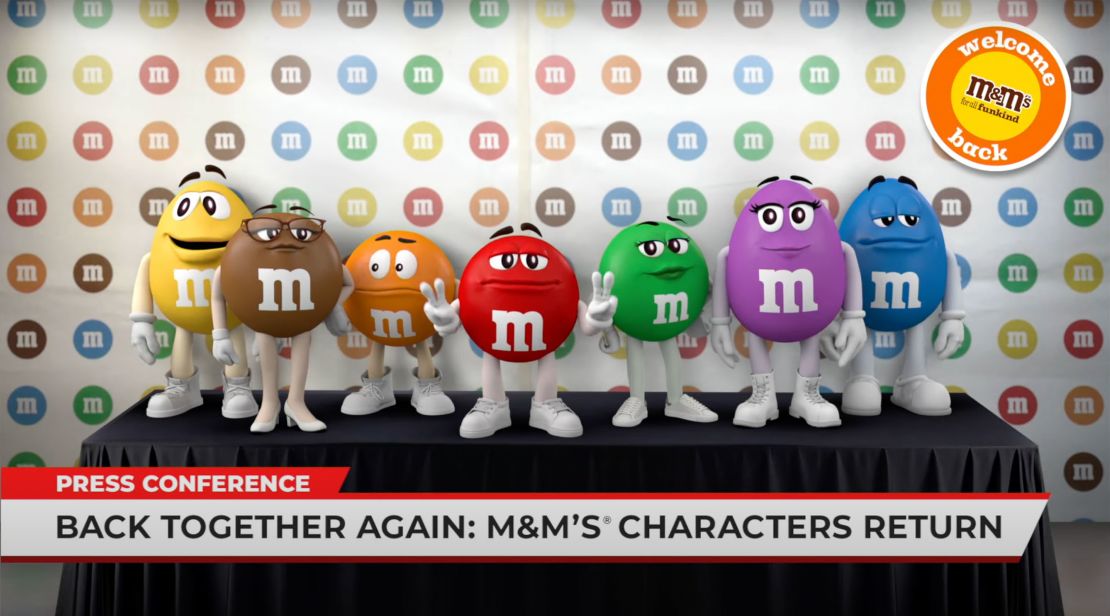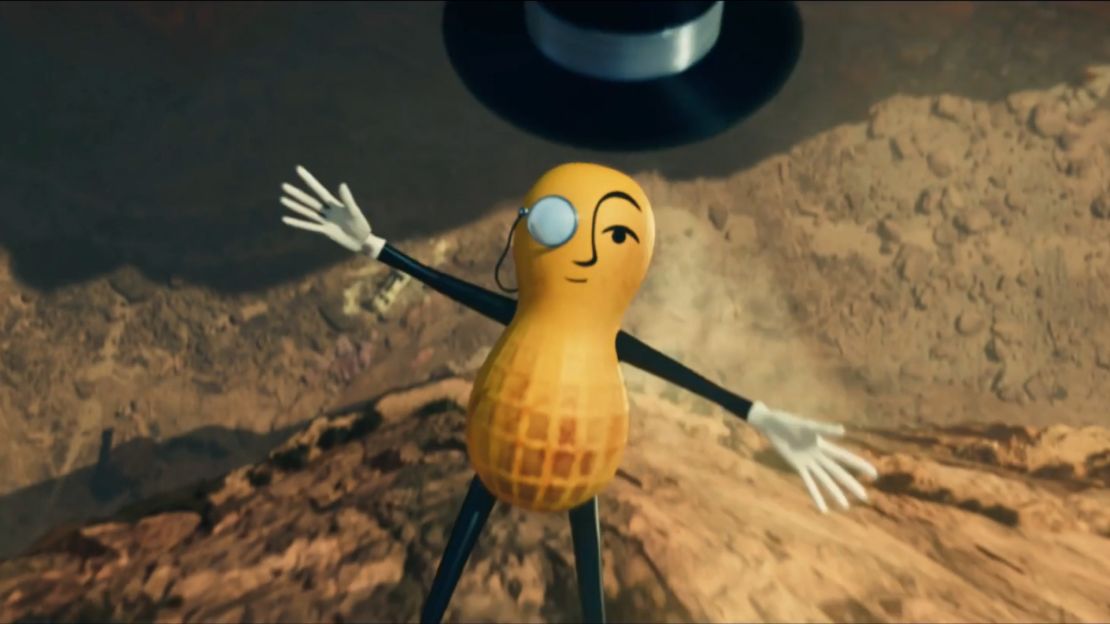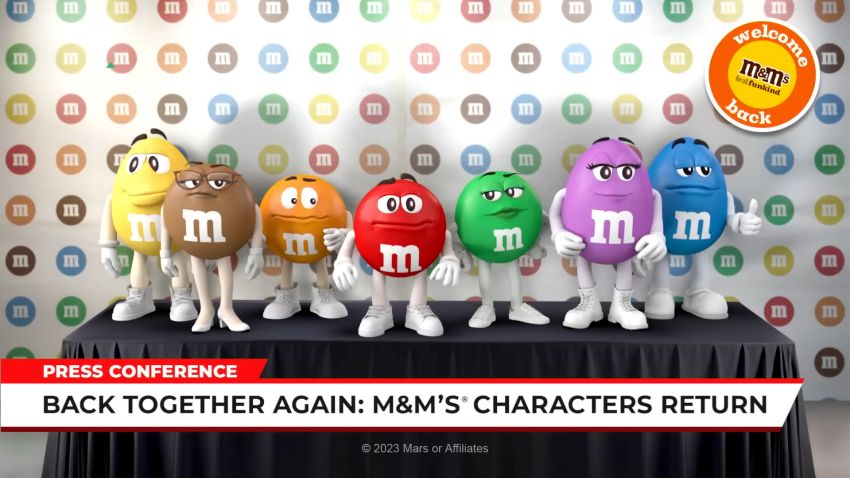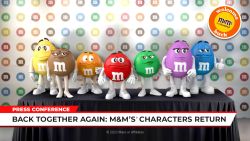The much-hyped M&M’s Super Bowl commercial that was supposed to clarify the status of the brand’s “spokescandies,” which were put on pause after they were criticized by right-wing pundits, finally aired on Sunday, and it was, well, confusing.
In it, actress and comedian Maya Rudolph tosses handfuls of the colorful candies in the air, but instead of M’s, they’re emblazoned with “Ma” and “Ya” and images of Rudolph’s face. Rudolph sings that the candies are now filled with clams. In the video, people take bites and look disgusted. Towards the end, eagle-eyed viewers will have seen a distressed looking Yellow M&M, and the Red M&M holding up a sign that says “HELP!”

The brightly-colored anthropomorphized M&M characters had become topics of conversation and criticism from some Green M&M fans after the characters’ shoe swap from heels to sneakers last year, and again after a January International Women’s Day campaign featuring female candies prompted cries of “woke!” from right-wing commentators.
The Super Bowl commercial, billed as the conclusion to weeks-long drama surrounding the status of the “spokescandies,” left some viewers scratching their heads.
“Are the M&M’s okay?” one person asked on Twitter. “Help me understand the #mms “Clams” #SuperBowlAd Seriously help me,” another pleaded. Some thought it was dumb, others funny.
Now, the brand assures people in a press release, the spokecandies have returned. In another short spot airing on Sunday, the characters say in a ‘press conference” that they’re glad to be back. The chyron says: “Back together again: M&M’s characters return.”

Those who have been paying close attention to M&M’s ad strategy might have understood the narrative progression: Before the commercial itself aired, M&M’s introduced Rudolph as its new spokesperson. In videos, Rudolph presented changes she’d made in her new role, like putting her own face on the candies and switching “M&M’s” to “Ma&Ya’s.” M&M’s also shared updates, sometimes downbeat, about the unemployed characters: Orange, for example, made a Spotify meditation playlist, Yellow tried representing Snickers, and so on.
But if you weren’t paying attention, the final commercial might be a head scratcher -— one risk a brand takes when it uses a weeks-long campaign ahead of its Super Bowl commercial.
Elaborate ad strategies
M&M’s lead-up campaign may have been among the most intricate, but the brand is not alone. In a change for the decades-old Super Bowl ad wars, it’s actually become a commonplace strategy to use social media to tease, preview and create buzz ahead of their Super Bowl commercials.
Companies spend millions just for a Super Bowl ad slot — reportedly over $7 million for some 30-second spots — before investing into the commercials themselves. Online campaigns, sometimes bolstered with glossy multi-page print ads like M&M’s, are a way to get the most bang for those bucks by pointing more people toward the commercial. Ad previews also give brands a chance to course-correct ahead of the big game if they get negative feedback.
But with so many companies following this playbook, it becomes even harder to break through — take viewers by surprise.
Dance contests and betting
Despite the high cost of a Super Bowl commercial, companies are eager to nab a spot. That’s because so many people tune in to the game (last year, about 208 million) and some of them are just interested in the commercials.
“Anything you run during the Super Bowl will automatically get some attention, as if it were a scheduled show or entertainment,” said Karen North, professor of digital social media at the USC Annenberg School for Communication and Journalism. “The question is, how do you get attention to you, in particular?”
Social campaigns may make the difference.
Some brands, like M&M’s, created an elaborate story for its characters. Others just hinted at which celebrities would be featured in their spots or released teasers. Doritos turned its campaign into a contest, inviting people to participate in a TikTok dance competition, with the winner appearing in Sunday’s ad. Molson Coors partnered with DraftKings to let people bet on the contents of its ad ahead of the game, raising the stakes for viewers.
Planters this year aired bits of a roast of Mr Peanut ahead of the game, who infamously “died” in a Super Bowl commercial in 2020 before being reborn as a baby, itself a very involved, and much criticized, campaign.

In addition to encouraging people to tune in, the campaigns actually take some pressure off the commercial itself, said Tim Calkins, a marketing professor at Northwestern University’s Kellogg School of Management.
“The Super Bowl is a very cluttered time,” he said. People get invested in the game, leave the room, scroll through their phones, chat with their friends. They may turn the TV off before some ads even air.
By hedging with an online campaign, itself designed to get people thinking about the brand, “you go into [the Super Bowl] with a much lower risk profile,” Calkins said.
Companies that release ads ahead of time can also gauge the public’s reaction. If it’s negative, they can make changes. GoDaddy, for example, pulled a 2015 ad about a puppy getting sold online after animal rights activists and others criticized the spot, and was able to replace it with a different commercial.
Everybody’s doing it
The popularity of the strategy means companies have to do even more to stand out.
“As soon as something works, everybody copies it, and then it no longer works quite so well.” That’s what was happening “in the run up to the Superbowl,” Calkins said.
Plus, hyping the commercials raises already-high expectations, noted Charles R. Taylor professor of marketing at the Villanova School of Business. A disappointing ad can weaken the rest of the campaign and chalk up a very expensive loss.
“If [the ad] just kind of blends into the background, it risks derailing your strategy,” he said.
The social campaigns themselves have to be effective, as well. M&M’s got a lot of people talking when it said it would put its spokescandies on pause. But few people were talking about Ma&Ya’s, or the characters’ search for alternate employment or hobbies.
And the campaign failed to address that initial claim from the company, that the spokescandies were too polarizing, which many saw as a capitulation to those accusations of the brand being too “woke.” In a press release, M&M’s parent company Mars said it was giving more grants to “change-making women” than it had announced as part of its Women’s Day campaign.
“They failed to engage us in the story, but they have caught our attention based on a crisis,” USC Annenberg’s North said of the candy brand’s social campaign. “I’m not sure if that’s such a positive move.”





















